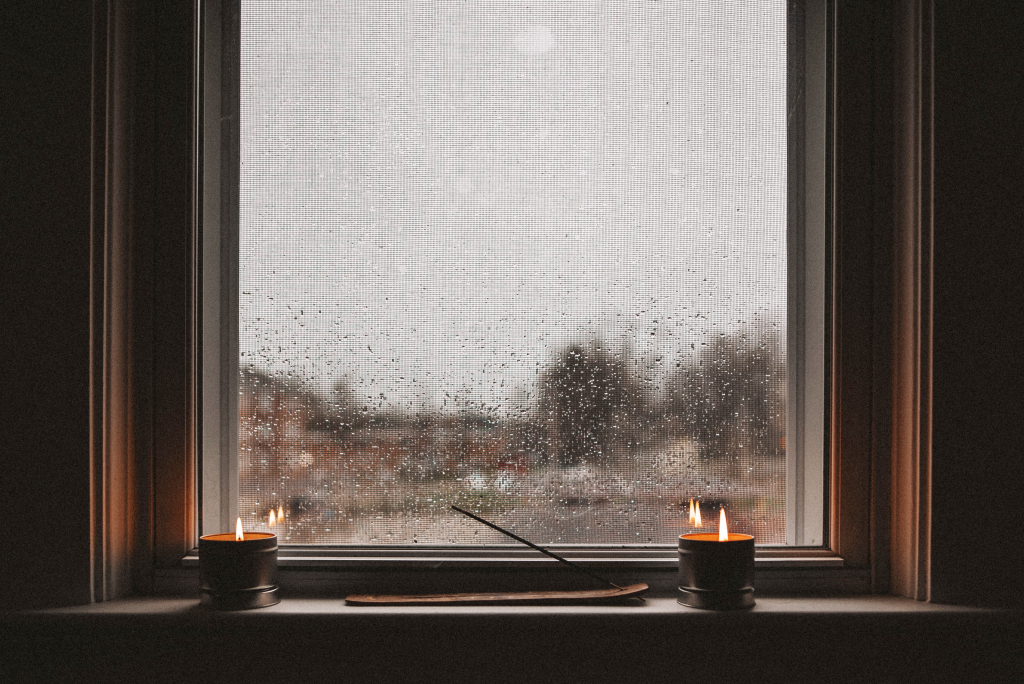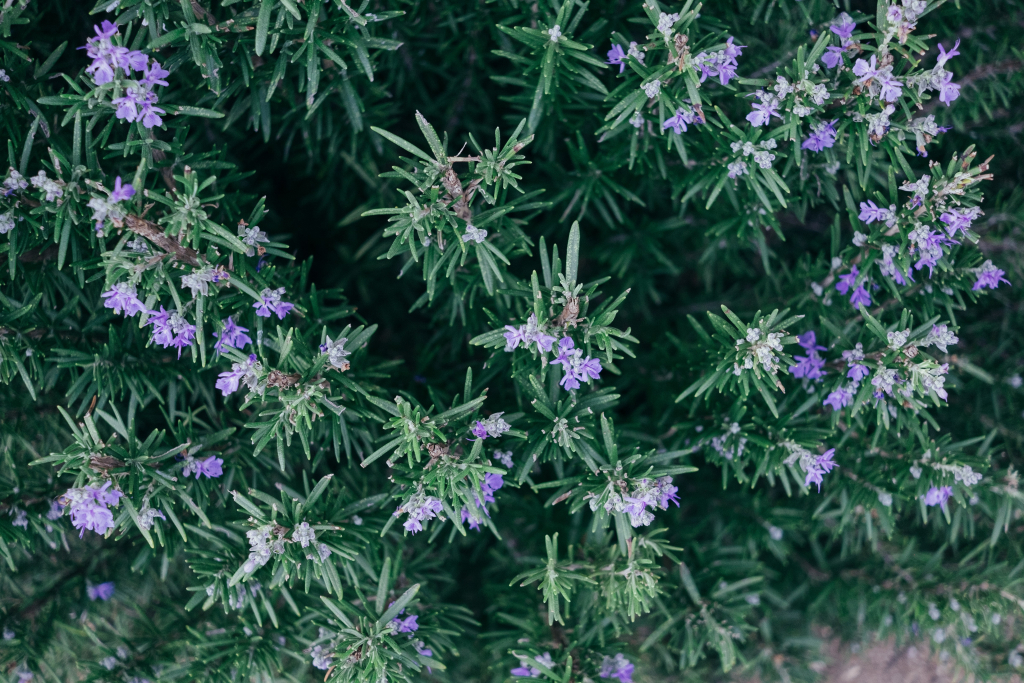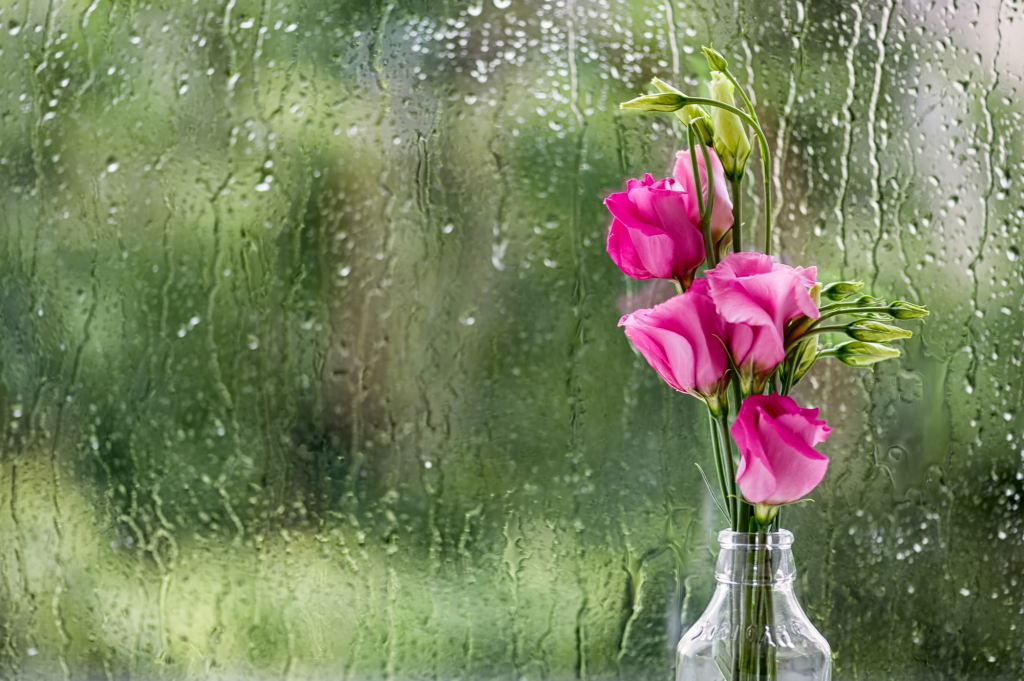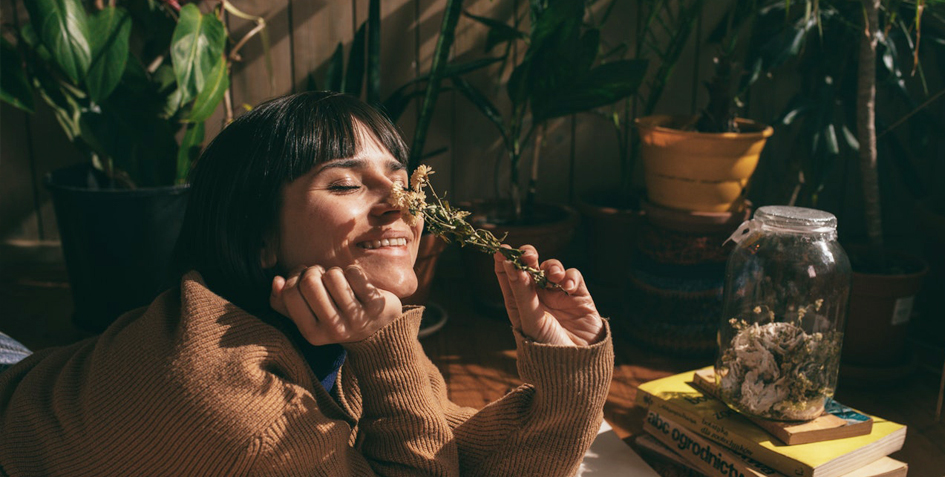
Do the winter days have you feeling blue?
Seasonal melancholy can be a big challenge for many people, especially here in the Pacific Northwest where the sun often peeks through an overcast sky only to tease us once every week or two. This time of year in the northern hemisphere, the weather tends to be cold and a little dreary; because of this, the inert feeling of the season might start to creep in.
Collectively, we may be facing some difficult emotions, as we navigate through the pandemic and hope for light at the end of the tunnel. These days, there are many uncertainties in the world, leaving people feeling fearful and isolated.
Winter also brings the downward energy of inertia, as the life-force of the trees return to their roots, and many animals go into hibernation. That being said, within us, a sense of lethargy, congestion and sluggishness can be reflected. Luckily, there are powerful plant allies you can rely on to help lighten your spirit while you wait for the sun to come out and the snow to melt.
Aromatic medicine is a useful way to maintain a vibrant mood and enlivened state of mind while in the dead of winter or during challenging times. Let’s learn about 6 helpful aromatic plants, their many health benefits, and other tips for easing seasonal depression this winter.

6 Aromatic Plants to Uplift Your Mood
The inhalation of aromatic plants can be one of our most helpful tools for enhancing our state of mind, as our sense of smell directly influences it. When we breathe in the volatile oils from a plant, it signals neurotransmitters which shift the chemistry in our brain and balance our mood [1].
The plants listed below are just a few of many aromatic plants which can help bring peace to your mental and emotional body. However, every person is unique, and therefore can react differently to any plant. So, it is important to always listen to your body to know if a plant works well for you!
Jasmine
Jasmine is a classic example of an aromatic plant traditionally used to restore balance within our emotional body. It has been utilized by cultures throughout history in aromatic medicines and cosmetics to uplift the human spirit. Ayurveda, the traditional medical system of India, says Jasmine has an affinity for the nervous, endocrine and musculoskeletal systems, and is indicated for stress and depression. Jasmine essential oil has a sedative effect on the body, which can relieve tension and anxiety. It can also help to reduce spasms or pain in the muscle tissue.
For a beautiful mood enhancing essential oil blend, add two drops of Jasmine absolute, along with two drops of Lavender, and four drops of Lemongrass essential oils into an essential oil diffuser with some water. It may be winter, but this blend will make your house smell like a summer day! If you would like to wear this blend on your body, add the same amount of essential oil to ½ oz of a carrier oil. For a larger quantity, simply increase the amounts while following the same ratio.

Rosemary
Rosemary is a warming herb with an affinity for the brain and heart. This is due to the fact that the volatile oils of Rosemary are pungent, bitter and stimulating, and increase circulation [2]. Rosemary can help to improve concentration and enhance your mood and can be a great remedy if your mind is feeling sluggish or foggy.
Rosemary is wonderful as an essential oil, which can be added to a diffuser, your bath, or to a pot of boiling water on the stove. However, Rosemary is also a fantastic herb to add to your regular cooking regime.
If you are feeling a sense of lethargy during the day, Rosemary makes for a tasty herbal tea. Add 1 tsp of loose leaf Rosemary to your tea infuser and pour hot water over top into a mug. Let the tea steep for at least five minutes, or until it is cool enough to drink. Feel free to add honey, a squeeze of lemon, or any other plants you would like to the drink. This tea may help you to maintain a keen sense of focus throughout the day!
Unlock Your Free Rosemary Issue Of...
🌿 The Aromatic Medicine Garden Membership 🌿
Are you ready for a deeper, holistic dive into the world of aromatic plants? See what our membership is all about with your free sneak peek issue, including an hour-long plant talk and a 21-page plant monograph pdf.

Sandalwood
For thousands of years, Sandalwood has acted as an aromatic centerpiece in many Asian cultures for various reasons – often a key plant used for spiritual practices, medicines, rituals, offerings, and in oils and perfumes. Ayurveda considers Sandalwood to be bitter, sweet and astringent in taste [2]. Due to these qualities, it is said to have a calming, cooling and awakening effect on the body and mind[2].
Traditionally, Sandalwood has been used to reduce heat and inflammation in the body, relieve headaches, stress, emotions of anger and frustration, and help with insomnia. It also has an affinity for the nervous system, and when utilized as an essential oil or incense, can stabilize the mind and return us to a more gentle place within. That being said, Sandalwood incense or essential oil can be a great addition to your meditation practice, as it may help to clear negative thoughts and harness a feeling of creativity and bliss!
Please remember to check labels before purchasing any Indian Sandalwood product (Santalum album sp.), as the plant is threatened [3]. Only buy it from trusted sources which either sell sustainably harvested or cultivated Sandalwood.
Elemi Resin
The lesser known yet powerful Elemi has a fresh, zesty, potent lemon scent and is great for awakening the senses. In Ayurveda, the smell of Citrus is said to be helpful in sharpening our ability to focus. The sour quality of citrus is considered warming and stimulating, which is counteractive to a depressive state. Though Elemi resin is not a Citrus, it shares similar chemical compounds, and when inhaled, has a similar effect on the mind.
Elemi is simply wonderful as an incense. As the resin melts it releases a beautiful lemony aroma into your space, sharpening your senses and uplifting energies. To burn Elemi resin properly as an incense, click to read our detailed Smokeless Incense Burning guide here.
Lavender
Lavender is well-loved throughout the world for its calming effects. It is a plant that many people might think of when looking for relaxing aromatic support. Like many of the botanicals listed in this article, Lavender has an affinity for the nervous system.
There are many different species of Lavender which have traditionally been used for therapeutic and cosmetic purposes. Some species can differ slightly in quality, but generally have been used for similar purposes.
Lavender’s flowers have a sweet, floral aroma, and their medicinal properties are indicated for symptoms such as depression, restlessness, anxiety, insomnia, hormonal imbalances, stress, headaches and migraines. Ayurveda also considers Lavender to be helpful in regulating the heartbeat, lowering blood pressure, soothing muscular and joint tension, and reducing inflammation, particularly on the skin. Lavender essential oil is widely available, and can likely be purchased at your local herb shop, natural grocery store or sustainable online companies.
To experience Lavender’s benefits, try adding a few drops of its essential oil to your next bath or into your diffuser and see how the aroma makes you feel. Another great way to experience Lavender is by drinking it as an herbal tea or adding its tiny flowers to a loose incense blend.

Rose
What could be more heart-expanding than the entrancing smell of Rose?
This botanical has a powerful ability to open and mend a wounded heart. In traditional medicine systems, Rose has been used to regulate hormones, balance the menstrual cycle, relax the nervous system, balance emotions and aid with sleep disruption. Rose can bring us back into our heart center, and help us to process difficult emotions.
There are many ways that Rose can be utilized: you can simply steep fresh or dried petals in hot water to drink as an herbal tea, or add the petals into your next bath. Alternatively, Rose absolute (a much cheaper solvent-extracted alternative to essential oil) can be added to a diffuser to bring a sweet, perfumy scent to your environment, or you can dilute Rose absolute or essential oil with a carrier oil and wear it on your body.
Applying Rose infused oil to your face in the morning and/or before going to bed, can make for a beautiful, self-love ritual. To do this, wash your face with warm water first, and then pat it dry with a clean towel. Allow your face to remain slightly damp, put some oil into the palm of your hand and then rub your hands together. Following this, gently apply the oil to your face.
Rose has a cooling effect, and is said to have an affinity for the skin, so it can be helpful in relieving rashes or other irritations. Rose infused oil can be purchased, or you can make your own by adding a few drops of essential oil to 1 oz of a carrier oil. Sunflower, Jojoba, Coconut or Grape seed would make good carrier oils for this, as they are not overpowering in scent.
Alternatively, for a DIY Rose infused oil, if you have access to fresh Rose petals (dried will not be as potent) in the warmer months, pick enough to fill a small jar ¾ of the way full. Fill the jar up the rest of the way with a carrier oil of your choice, leaving 1 or 2 finger widths of air above. Allow the extraction process to take place for 4-6 weeks, shaking the jar every day or two. Strain and enjoy topically.

Incense and Rituals
Rituals can be helpful in creating a rhythm within our lives. All of nature moves in rhythm, and if you invite daily practices into your life which follow the natural flow of your environment, you may find yourself feeling more balanced. Cultures have traditionally paired incense with ritual and ceremony for thousands of years.
This doesn’t have to be anything too complicated – it could simply include lighting an incense in the morning each day to clear your space and enrich your senses. Starting your morning with pleasant fragrances and a ritualistic flow can help induce creativity, relaxation, and plants the seed for a fantastic day!
Other ways to invite rituals into your life could be burning an incense or offering aromatic plants to a fire on the full and new moons. Bringing your awareness to the moon can connect you with the cycles of nature, and can be a great reminder to shed old patterns, create spaciousness within yourself, and allow for receptivity and creativity to flow.
Spending Time in Nature
Spending time in a natural environment can be helpful in balancing your emotions and returning you to a state of inner peace. To be with the scents, sights, and sounds of nature, and to breathe in fresh air is a wonderful way to feel reconnected and restored.
Spending time outdoors can remind us that we are part of something greater than ourselves. If you are feeling down, it may be helpful to go to your local park, forest, or walking trails for a nice stroll. If those places feel inaccessible to you, even the experience of sitting outside and being with the surrounding plant life in your neighborhood can expand your heart and leave you with a harmonious feeling within.
Aromatherapy for Depression & Self-Discovery
One of the most beautiful things about working with plants is that along the way, you almost certainly will illuminate parts of yourself that you may never have known otherwise. Moving through the rest of the winter season, it could be an exciting adventure to see which aromatic plants you connect with.
Aromatic medicines are a subtle, yet potent way to reawaken your inner fire and kindle your spirit. With the botanical kingdom by your side, you have the opportunity to flow seamlessly out from the cold winter daze with a wonderfully luminous heart!
Article Written By Dawn Gibson

References
- Xiao Nan Lv, Z.J. Liu, H.J. Zhang , C.M. Tzeng. (2013). Aromatherapy and The Central Nerve System (CNS): Therapeutic Mechanism and Its Associated Genes.
- Lad, V. & Frawley D. (1986). The Yoga of Herbs: An Ayurvedic Guide to Herbal Medicine.
- Pejhanmehr, M. & Adams, J. 2016. Santalum freycinetianum. The IUCN Red List of Threatened Species
© 2022 The Northwest School of Aromatic Medicine. All rights reserved.
*The statements above have not been evaluated by the FDA, and are for educational purposes only. This article is not intended to diagnose, treat, cure, or prevent any disease. This article should not be taken as medical advice. Please consult your physician before you use this information for health purposes.
